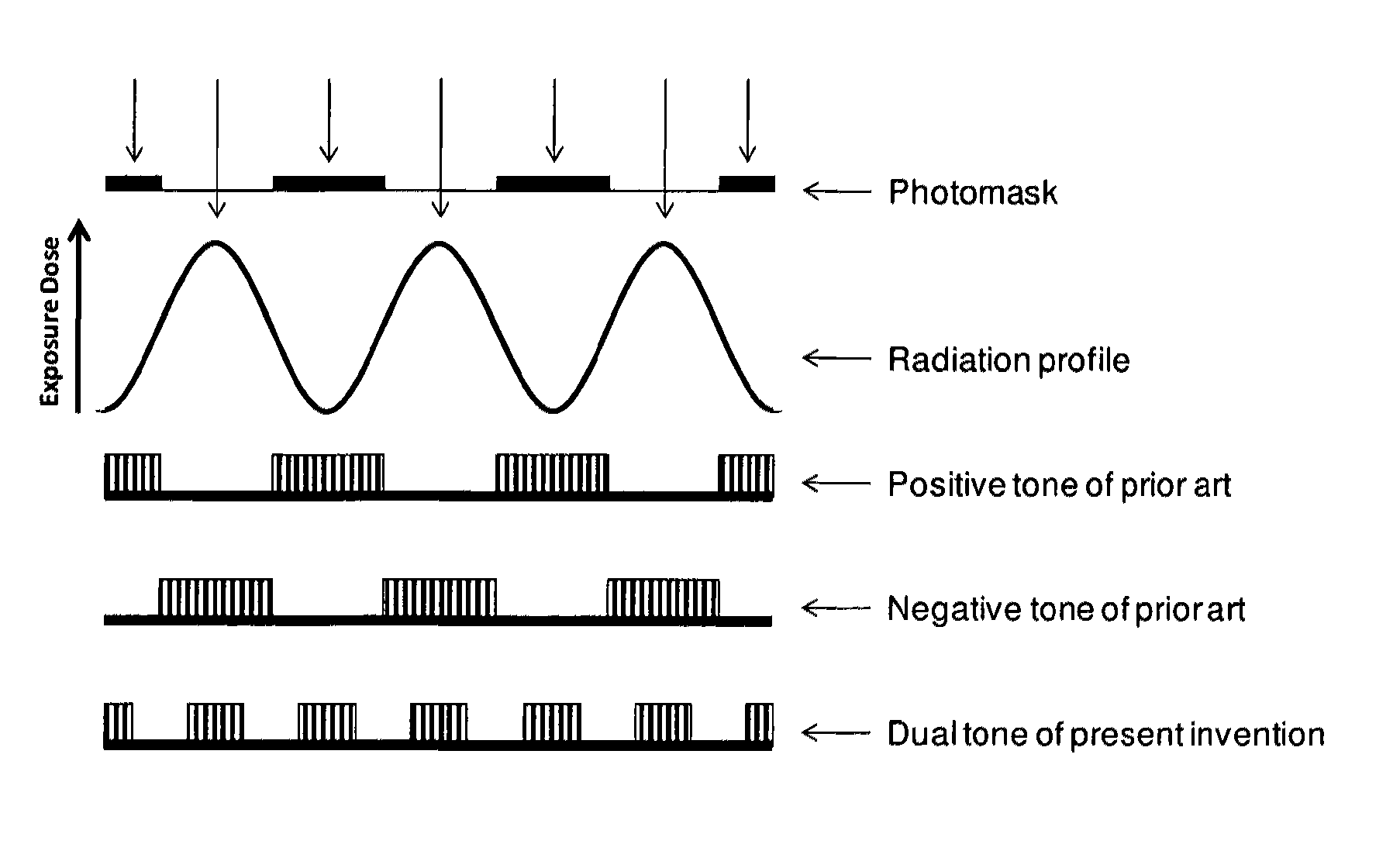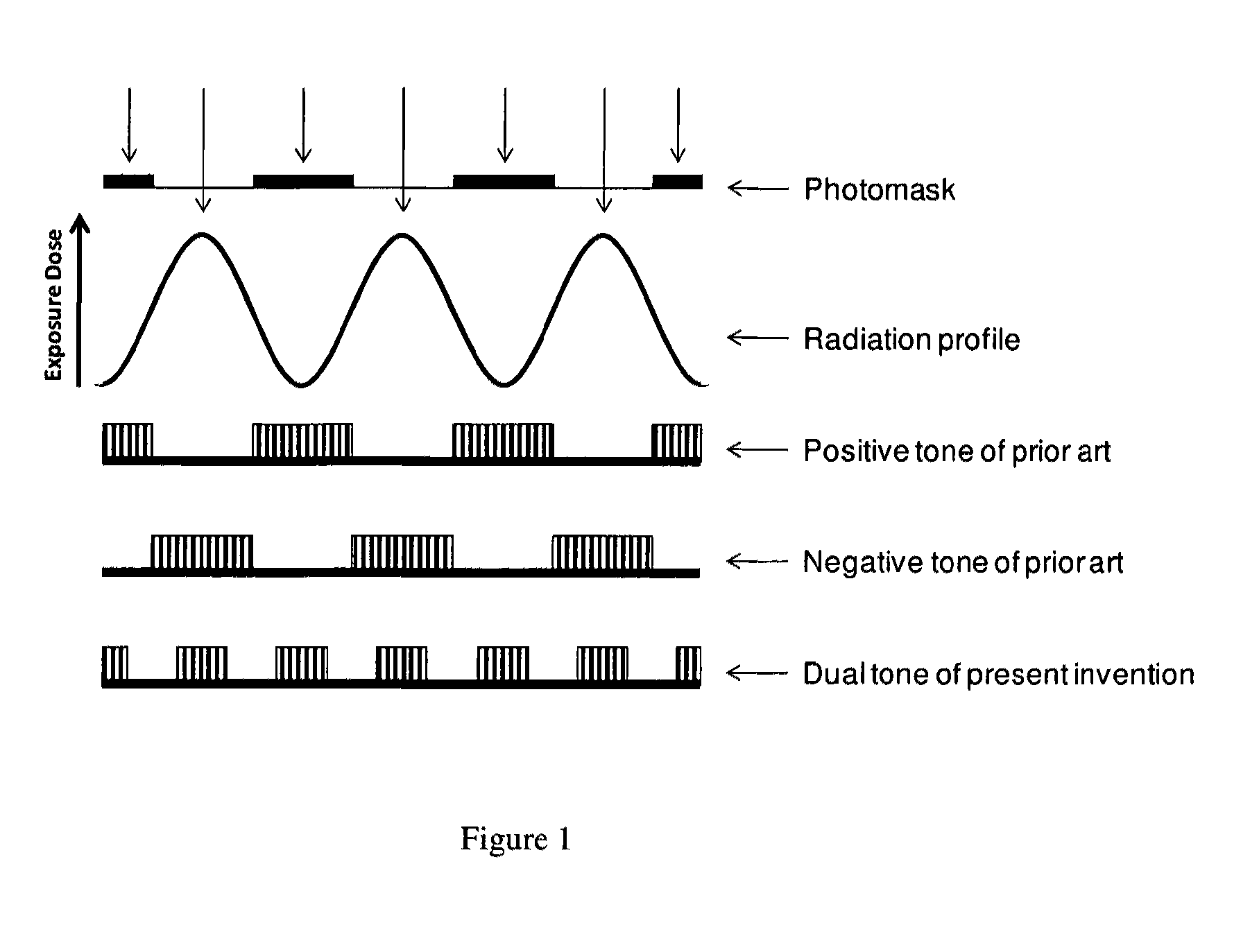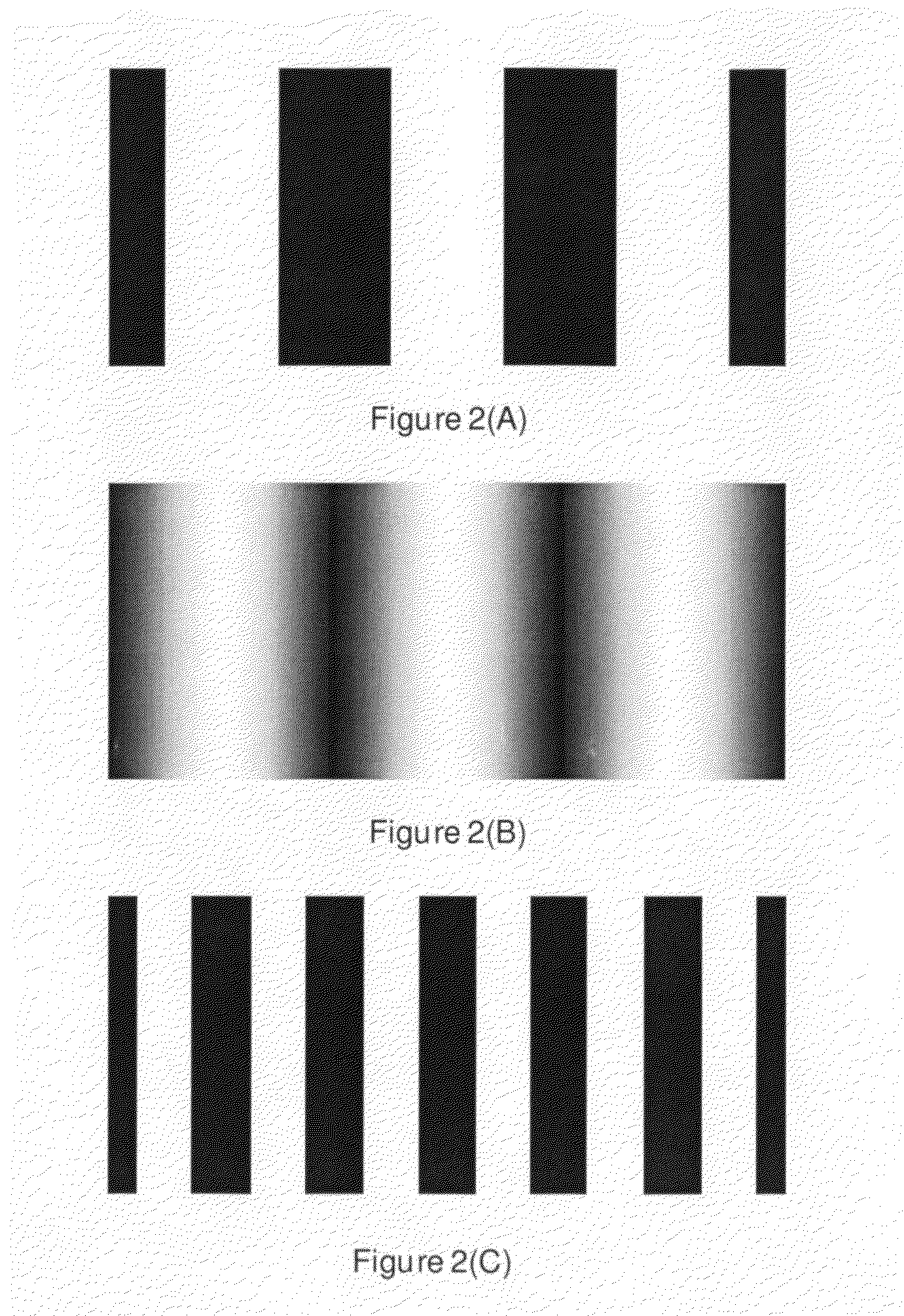Photo-imageable hardmask with dual tones for microphotolithography
a micro-photolithography and hardmask technology, applied in the field of micro-photolithography, can solve the problems of less popularity, difficult to find instances of using negative-tone photoresist in delineating high-resolution images of precursor structures for integrated-circuit fabrication, and lack of viable chemistry platforms
- Summary
- Abstract
- Description
- Claims
- Application Information
AI Technical Summary
Problems solved by technology
Method used
Image
Examples
example 1
Synthesis of Polysiloxane and Polysilsesquioxane Resin I
[0067]
TABLE 1Monomers for Polysiloxane and Polysilsesquioxane Resin I:Methyl trimethoxy silane (Gelest, Morrisville, PA)65.2 gramsTetraethoxy silane (Gelest, Morrisville, PA)26.6 gramsPhenyl trimethoxy silane (Gelest, Morrisville, PA)5.06 grams2-(3,4-Epoxycyclohexyl)ethyl trimethoxy silane (Gelest,1.57 gramsMorrisville, PA)
[0068]Monomers in Table 1, together with 80 grams of propylene glycol methyl ether acetate (from Sigma Aldrich (Milwaukee, Wis.)), were mixed in a 500-mL three-neck round-bottom flask. Attached to the flask were distillation condenser, thermometer, and nitrogen inlet. Nitrogen flow was set at 200 milliliters per minute. With stirring, temperature of the mixture in the flask was raised to 95° C. in oil bath. Then, 50 grams of 3-nomal acetic acid were slowly added to the flask. Condensation reactions began. Volatile byproducts were distilled out of the flask and collected. Distillation completed in four hours. ...
example 2
Synthesis of Polysiloxane and Polysilsesquioxane Resin II
[0069]
TABLE 2Monomers for Polysiloxane and Polysilsesquioxane Resin II:Methyl trimethoxy silane (Gelest, Morrisville, PA)66.2 gramsTetraethoxy silane (Gelest, Morrisville, PA)26.6 gramsPhenyl trimethoxy silane (Gelest, Morrisville, PA)5.06 grams
[0070]Monomers in Table 2, together with 80 grams of propylene glycol methyl ether acetate (from Sigma Aldrich (Milwaukee, Wis.)), were mixed in a 500-mL three-neck round-bottom flask. Attached to the flask were distillation condenser, thermometer, and nitrogen inlet. Nitrogen flow was set at 200 milliliters per minute. With stirring, temperature of the mixture in the flask was raised to 95° C. in oil bath. Then, 50 grams of 3-nomal acetic acid were slowly added to the flask. Condensation reactions began. Volatile byproducts were distilled out of the flask and collected. Distillation completed in four hours. Heating stopped immediately after distillation is finished. Totally 102 grams o...
example 3
Dual-Tone Photo-Imageable Hardmask Composition I
[0071]
TABLE 3Ingredients of Dual-tone Photo-imageable Hardmask Composition IResin I (from Example 1)39 grams1,1,1-Tris(hydroxymethyl)ethane (Aldrich,0.1 gramsMilwaukee, WI)Triphenylsulfonium tris(trifluoromethyl)methide0.06 grams(Ciba, Basel, Switzerland)t-Butyl 4-hydroxy-1-piperidinecarboxylate0.06 grams(Aldrich, Milwaukee, WI)Benzyltriethylammonium chloride (Aldrich,0.02 gramsMilwaukee, WI)Propylene glycol methyl ether acetate100 grams
[0072]Composition I was made by mixing the ingredients in Table 3. When all the solids dissolved, the composition was filtered through a membrane with 0.02-micrometer pores. In the composition, film-modifier, that is 1,1,1-tris(hydroxymethyl)ethane), is 2.7% of the resin by weight. Molar ratio of photoacid generator, that is triphenylsulfonium tris(trifluoromethyl)methide, to catalyst, that is benzyltriethylammonium chloride, is 1.42. Catalyst load is 0.014% of total weight.
Photolithographic Conditions ...
PUM
| Property | Measurement | Unit |
|---|---|---|
| wavelengths | aaaaa | aaaaa |
| molar ratio | aaaaa | aaaaa |
| temperatures | aaaaa | aaaaa |
Abstract
Description
Claims
Application Information
 Login to View More
Login to View More - R&D
- Intellectual Property
- Life Sciences
- Materials
- Tech Scout
- Unparalleled Data Quality
- Higher Quality Content
- 60% Fewer Hallucinations
Browse by: Latest US Patents, China's latest patents, Technical Efficacy Thesaurus, Application Domain, Technology Topic, Popular Technical Reports.
© 2025 PatSnap. All rights reserved.Legal|Privacy policy|Modern Slavery Act Transparency Statement|Sitemap|About US| Contact US: help@patsnap.com



